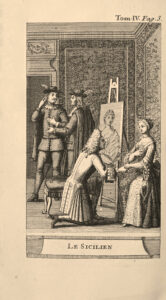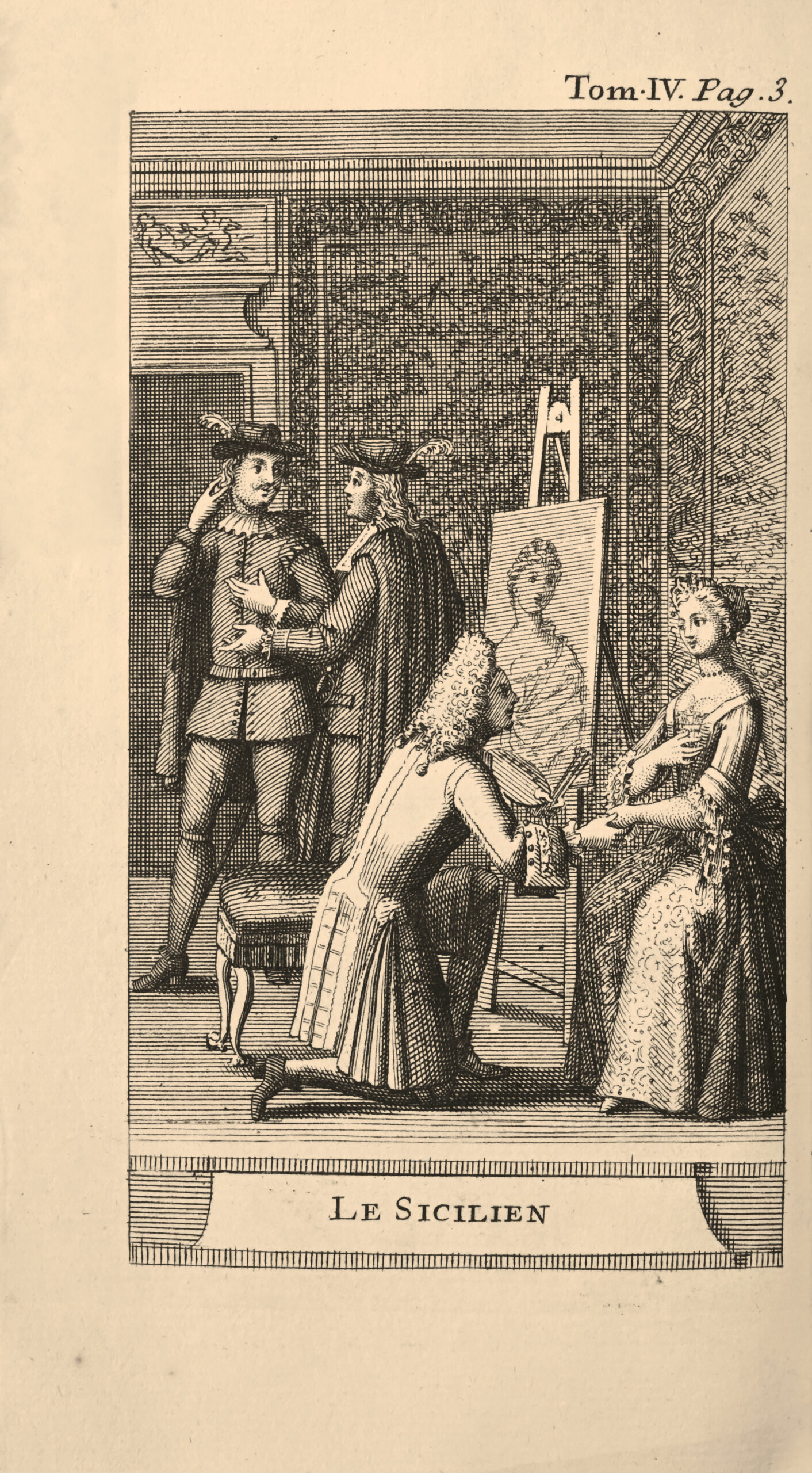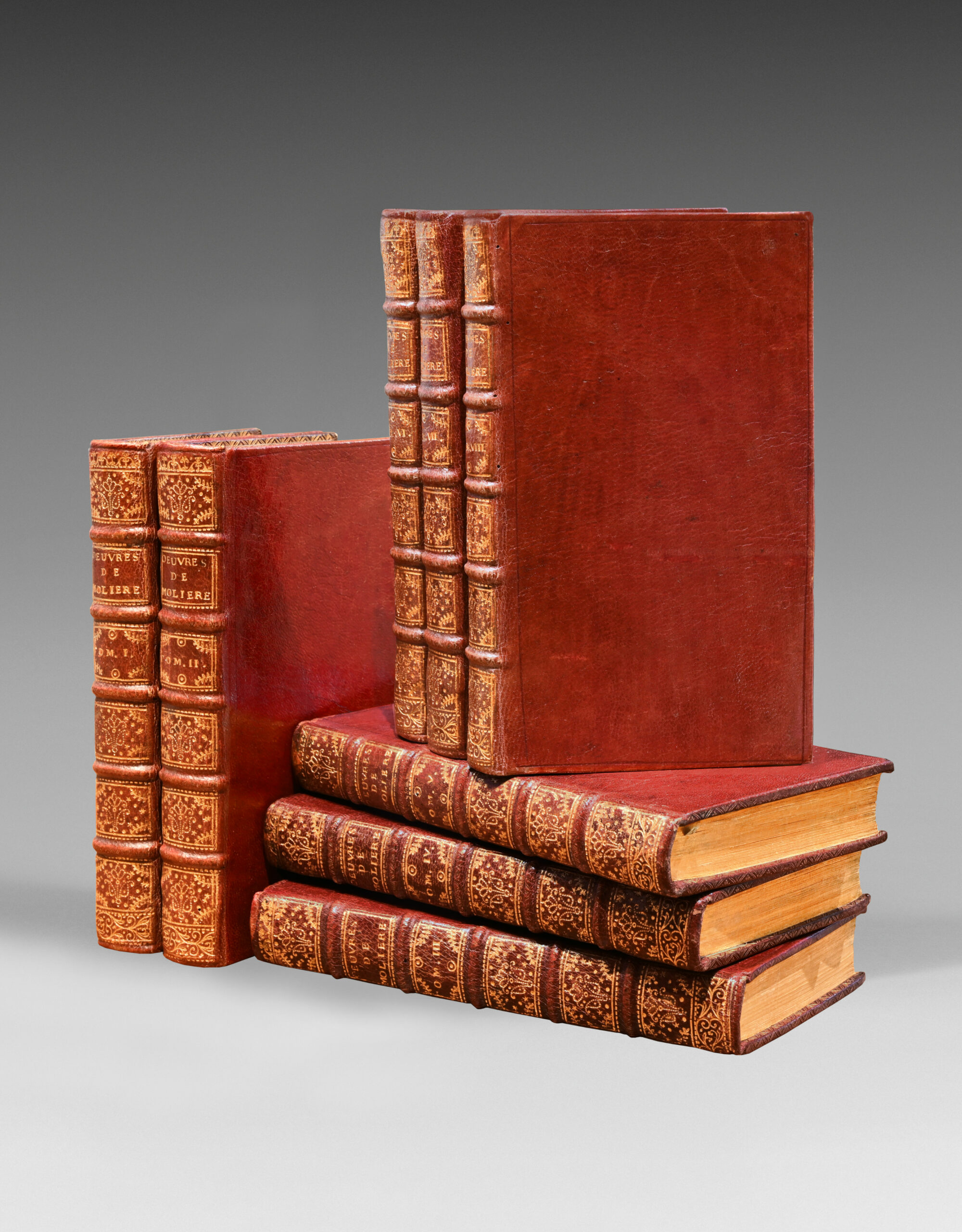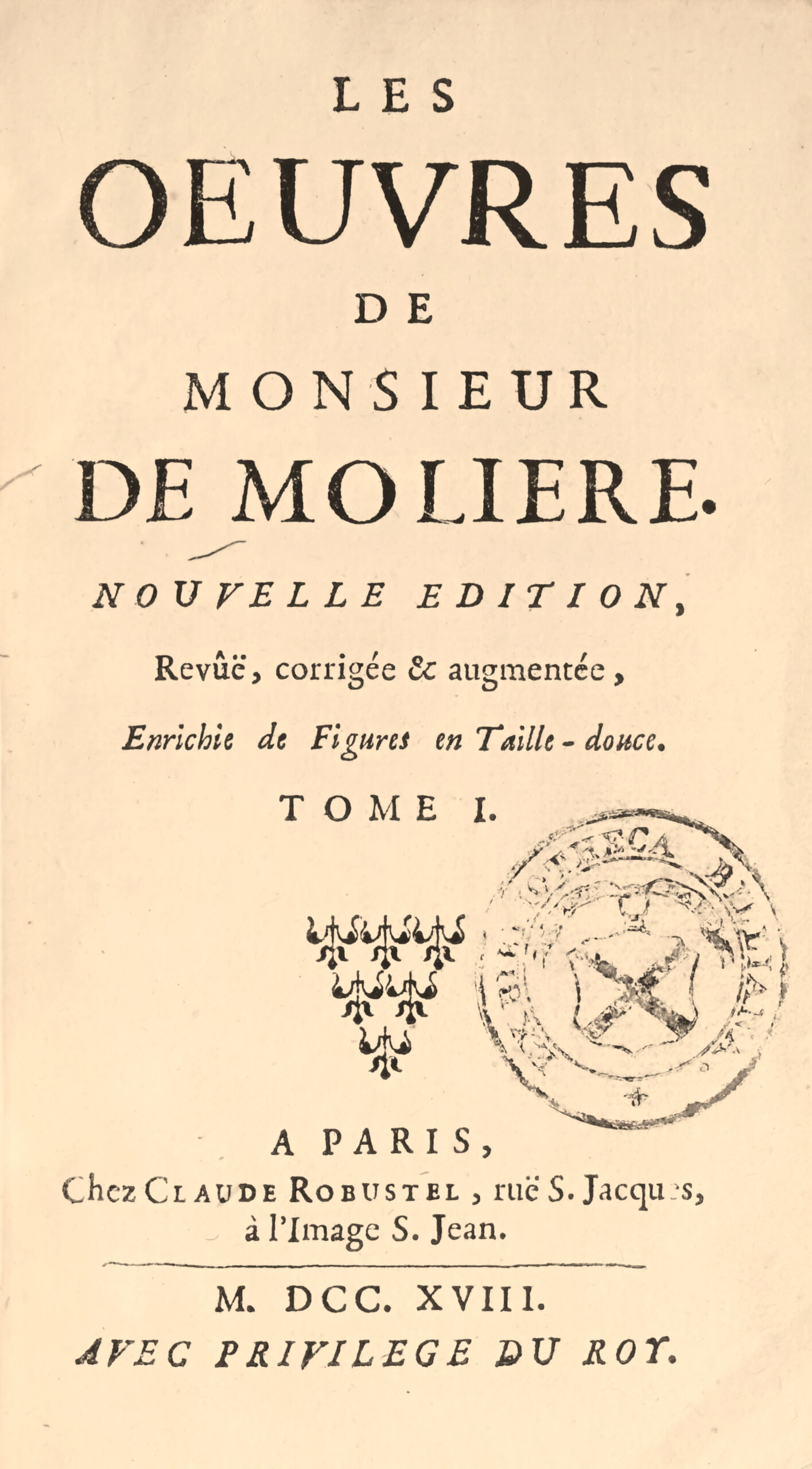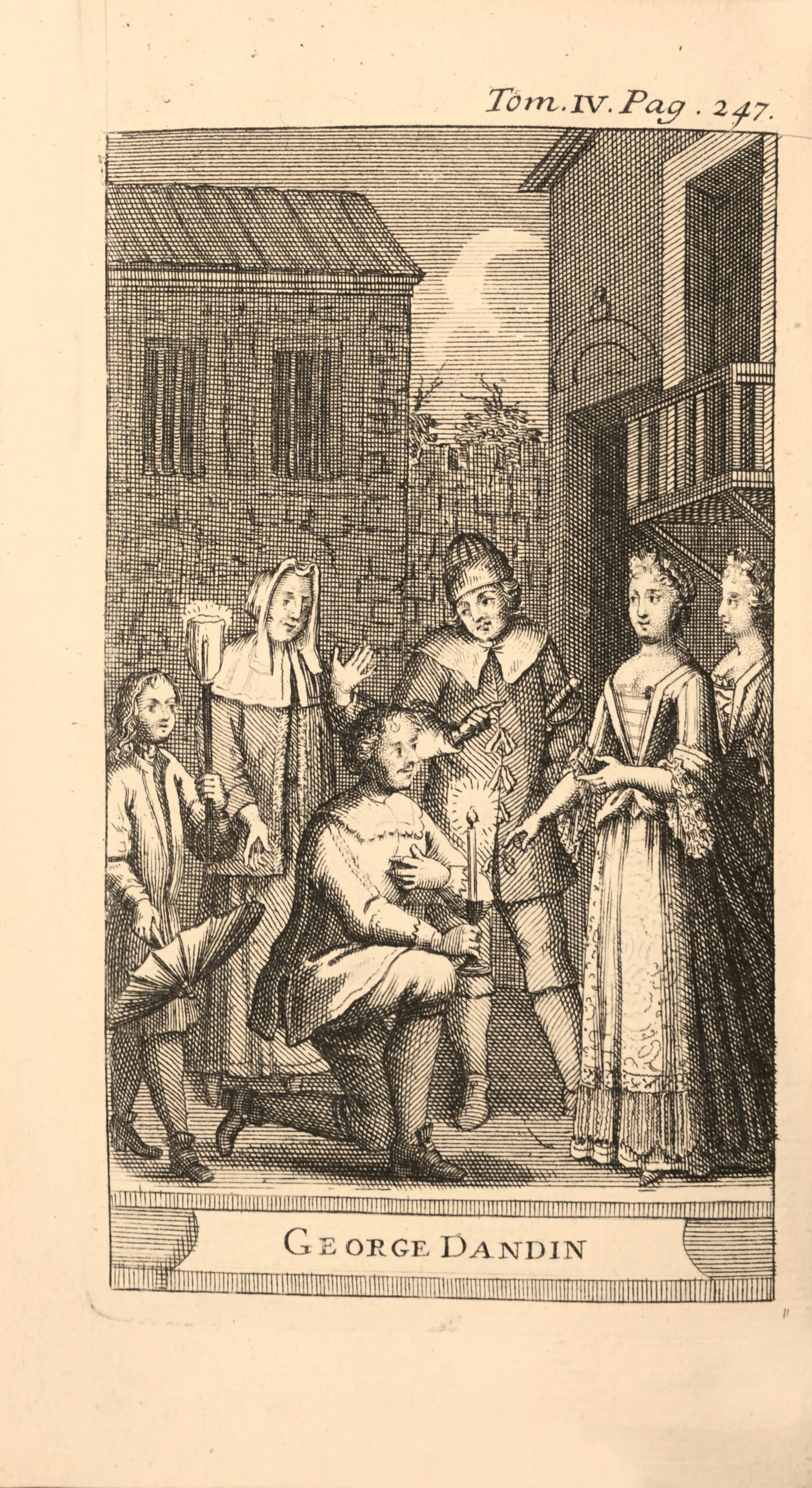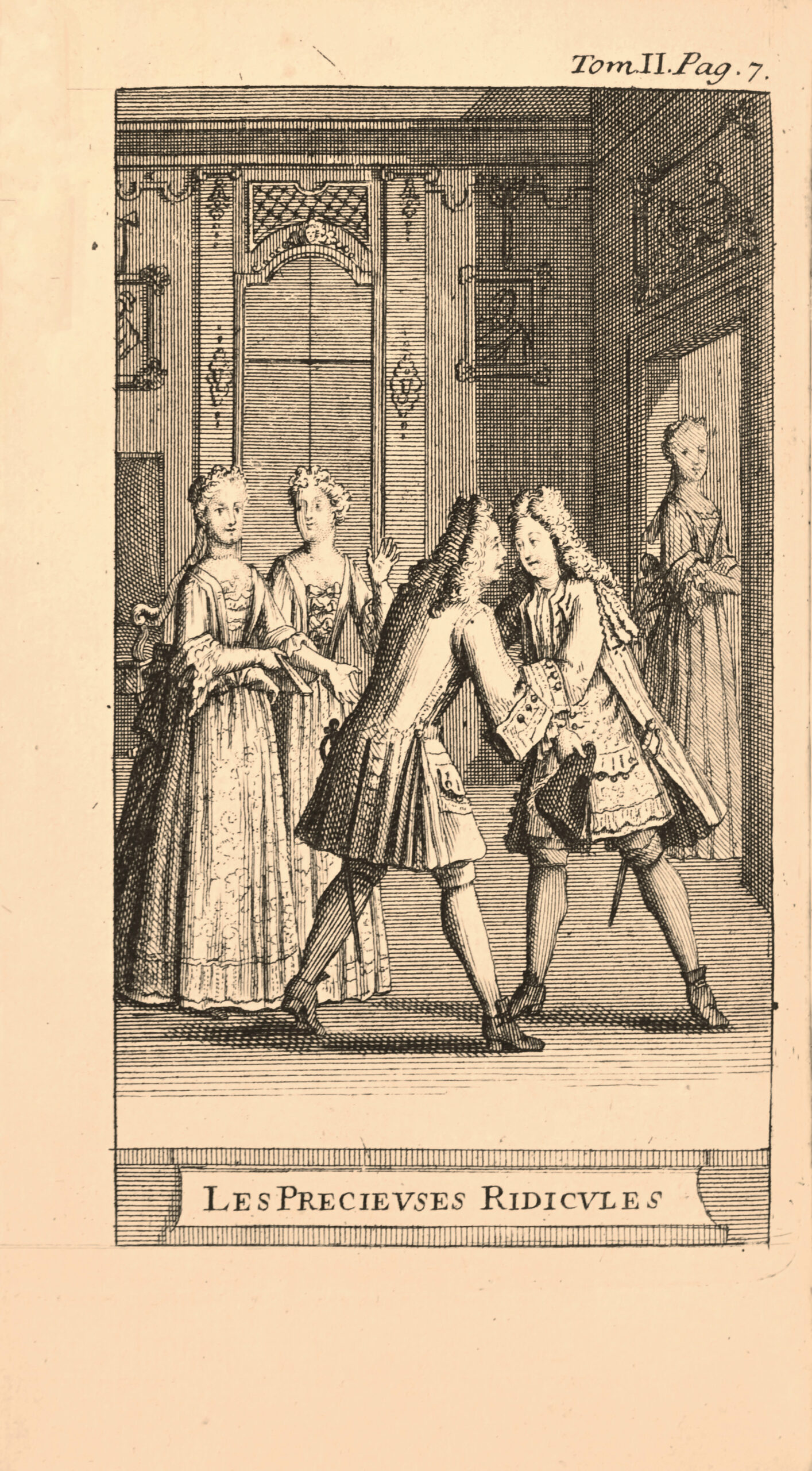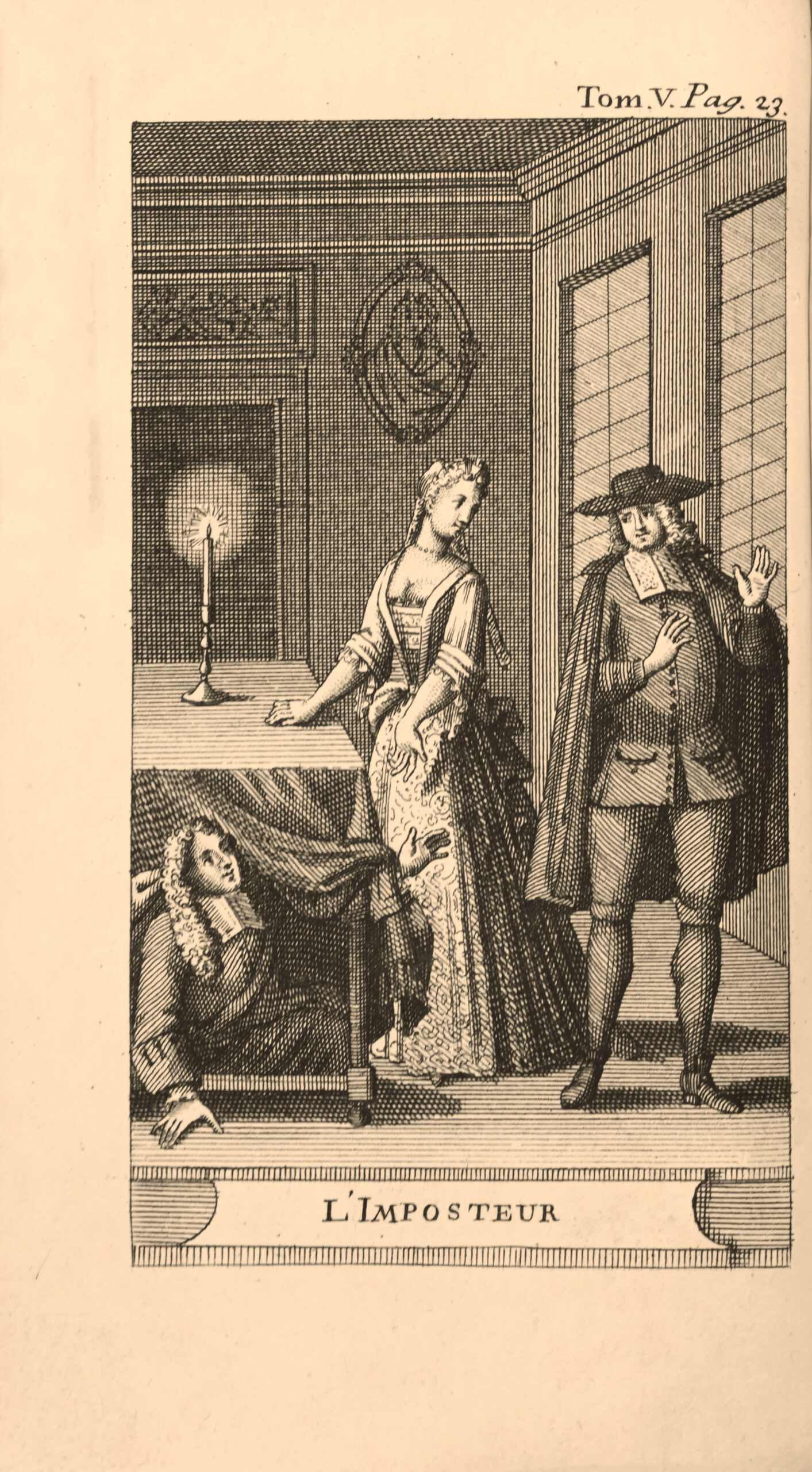Paris, Claude Robustel, 1718.
Together 8 volumes 12mo of : I/ (14) ll., 1 portrait of the author, 352 pp. , 2 plates ; II/ (2) ll., 372 pp., 6 plates ; III/ (2) ll., 384 pp., 5 plates ; IV/ (2) ll, 324 pp. numbered 322, 4 plates out of text; V/ (2) ll., 330 pp., 3 plates out of text; VI/ (2) ll., 285 pp., 3 plates out of text; VII/ (2) ll., 336 pp., 5 plates out of text; VIII/ (4) ll., 299 pp., 3 plates out of text.
Full jansenist red morocco, blind-stamped fillet around the covers, ribbed spines richly decorated with gilt tools (palmettes and dotted tools), gilt over marbled edges. Fine contemporary binding attributable to Luc-Antoine Boyet.
160 x 92 mm.
New edition, the first complete collective edition dating from 1682; it reproduces the text of the 1710 edition with the addition of scene sets, remarks and corrections.
The text is that of the 1682 edition, with the addition of Grimarest’s life of Molière.
The editors of the 1710 and 1718 editions added numerous incidental pieces. For the 1710 edition, the Company of booksellers who shared the costs and copies are: Michel David, Guignard, Aubouyn, Cavelier, Charpentier, Osmont, Ribou, Clousier and Trabouillet. It seems that the partners of the 1718 edition, eight yêrs later, are still the same (the extract from the privilege is that of the 1710 edition and gives the same names).
The first volume contains a title page in the name of Claude Robustel, while all other volumes bêr “Par la Compagnie des libraires”. This practice of placing a title page in the name of one of the Company’s booksellers at the beginning of the first volume was intended to enable booksellers to share a fixed number of copies once the printing was complete. It may even have been the case that êch bookseller collected his “sheet” copies and had them bound to his own taste for his customers.
The first volume contains Grimarest’s life of Molière and criticism of Molière’s life, as well as a reply to this criticism by Grimarest. The eighth volume still contains the play L’ombre de Molière by Brécourt, who was an actor in Molière’s plays.
“Included in this edition are the ‘Vie de Molière’, by Grimarest, with the Lettre critique à M. de … sur cette Vie, and the Addition à la Vie de Molière, containing a reply to theCritique; Extraits de divers auteurs (Rapin, Baillet, Moréri, Perrault, Bayle, etc.), relating to Molière and his works, and the Recueil des épigrammes, épitaphes et autres pièces en vers sur sa mort.
This edition has been prepared and made more carefully than the others, which makes the poet Danchet say in his Approbation: ‘Je n’y ai trouvé rien qui ne puisse plaire à la curiosité de ceux qui recherchent avec soin tout ce qui regarde cet illustre auteur’.”
“This edition reproduces identically that of Paris, 1710, except for the addition of a few stage sets and a small number of corrections in the text… The posthumous works are still separated in volumes VII and VIII.
The prints have been re-engraved from those of 1710, but the engraver has removed many of the drawing details; he has also changed the character of the figures, and modified the costumes, removing, for example, the women’s fontanges, because they were no longer worn. In some of these engravings, we even have the exact fashions of the Regency.” (Lacroix, Bibliographie moliéresque, 307).
Illustrated with a portrait of Moliere by Mignard engraved by Audran, and 31 figures. the plates have been re-engraved and re-actualized for this edition; the costumes are in keeping with the tastes of the period, and follow the dress of the Regency actors.
An old note in pen on the flylêf attributes the binding to Antoine Michel Padeloup, which we cannot confirm.
A superb copy preserved in fine êrly 18th century red morocco bindings attributable to Luc-Antoine Boyet.
A study of the binding’s tools suggests that it was executed around 1720. He was appointed bookbinder to the Library of King Louis XIV in 1698 and died in 1733. According to Roger Devauchelle, “what is notable about this outstanding craftsman is the perfection of his work, which surpasses in solidity anything that has been done before him”. In a word, when a bibliophile has a Boyet binding in his hands, he feels it, he knows it. This is certainly the case here. The finesse and bêuty of the morocco used, the quality of the gilding and the overall finish lêve little room for doubt.
Provenance: Labbey de Billy with stamp on the title (ex bibliotheca Billiana), Rahir with ex libris, monogram VG on last endpaper of first volume.
